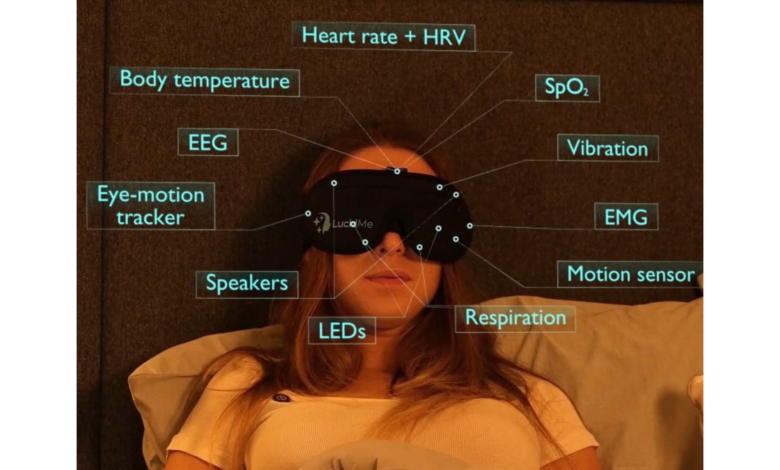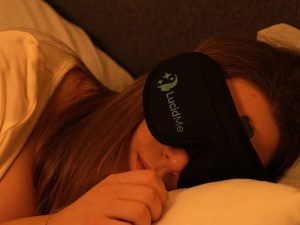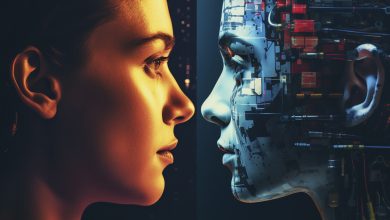
For years, AI has been busy translating text, generating images and solving increasingly complex real-world tasks. But there is one domain where progress has barely started: sleep. Despite millions of people struggling with insomnia, fragmented nights and snoring, very few technologies attempt to understand what the brain is actually doing while unconscious – let alone support it.
Part of the reason is that the recent boom in AI has been driven almost entirely by data and computational scale, while human physiological experience – especially during sleep – has remained largely overlooked.
Two fundamental barriers have blocked progress. The first is the absence of tools capable of interacting with sleep in real time – most devices can measure sleep, but none can meaningfully influence it. The second is the lack of a dataset specific enough to train AI on how sleepers respond to different cues or transitions.
Without such tools and data, AI has had no way to learn the language of the sleeping brain, leaving billions of people with the same unresolved issues night after night.
The limits of sleep tracking
Today’s consumer sleep gadgets do one thing well: counting. They tally hours slept, estimate stages, and generate “sleep scores” based on movement and heart rate. Useful, yes – but rarely transformative. A dashboard number cannot teach the brain to relax or prevent a 3 a.m. spike of stress from pulling someone out of deep sleep.
Researchers argue that sleep tech has reached a limit because it remains almost entirely retrospective. You wake up, check a graph, and carry on. In other words: we’re tracking sleep more than ever, but understanding it far less than we think.
Growing Evidence That Sleep Is Accessible
The idea of interacting with the sleeping brain has gained traction thanks to a series of controlled scientific studies, including work conducted by the research team at REMspace. One line of research has shown that lucid dreamers can engage in two-way communication during REM sleep, and another has demonstrated that lucid dreamers were able to control a virtual car while asleep.
A separate set of experiments demonstrated that information can also flow in the opposite direction. In these trials, participants were able to transmit musical rhythms from within a dream into the waking environment, suggesting that the dreaming mind can generate structured output that external instruments can detect without disrupting sleep.
Taken together, these findings challenge the long-standing view of REM sleep as a closed-off neurological state. Instead, they point to a brain that remains partially receptive and responsive, capable of both interpreting carefully timed cues and producing deliberate signals outward.
Welcome to the Future of Sleep
As researchers begin to treat sleep as an interactive physiological state rather than a passive one, the shift becomes more than theoretical. For instance, in our own work at REMspace, the transition from passive tracking to real-time sleep interaction is fully underway.
At the core of this shift is SomnoAI – soon to be launched – a technology trained directly on sleep–stimulus patterns, allowing it to operate during sleep rather than after it.
SomnoAI will power REMspace’s next-generation sleep mask, LucidMe PRO, which features three times more sensors than the previous version, including EEG and eye-motion tracking.
Once real-time sleep interaction becomes possible, the scope of what AI can improve reveals itself quickly. Here are the most promising ways SomnoAI can help:
1. Faster Sleep Onset Assistance
Many people struggle to fall asleep because the mind remains active long after the body signals readiness for rest. AI models trained on sleep-stimulus patterns could detect early drowsiness markers – slowed breathing, shifts in muscle tone, the first hints of theta-wave activity and introduce subtle cues to ease the transition into sleep.
2. Deeper, More Continuous Sleep
One of the most common barriers to restorative rest is the fragmentation of deep sleep. Even brief micro-arousals can disrupt slow-wave activity. With real-time monitoring, AI could identify the earliest signs of instability and deliver gentle sensory prompts to help maintain depth without waking the sleeper.
3. Lucid Dreaming Facilitation
Lucid dreaming relies on recognizable physiological patterns, such as rapid-eye movement sequences and characteristic neural signatures. AI systems capable of detecting these patterns in real time could send subtle prompts to increase the likelihood of lucidity, making controlled dreaming more accessible to sleepers who are otherwise unable to induce it reliably.
4. Guided Meditation
Pre-sleep relaxation plays a major role in sleep quality. AI-driven guided meditation linked to live biofeedback – heart-rate variability, breathing rate, stress markers – could adjust in real time based on the user’s physiological responses, helping the body reach a more sleep-ready state.
5. Stress and Relaxation Support
During the night, stress can manifest as micro-awakening, increased muscle tone, or spikes in heart rate. AI could identify these shifts as they develop and respond with calming cues, supporting smoother transitions back into sleep before full wakefulness occurs.
6. Snoring
Snoring is one of the most common and most ignored sleep disruptions. With multi-sensor inputs, AI could detect snoring patterns, variations in breathing, and signs that indicate airway instability, offering users clearer insight into issues that typically go unnoticed.
7. High-Precision Sleep Tracking
By combining signals such as EEG, eye movement, respiration, muscle activity, and temperature changes, AI has the potential to map sleep phases with far greater accuracy than wrist-based devices.
What Comes Next
The move from passive tracking to real-time sleep interaction is no longer theoretical – it is already taking shape as researchers combine multi-channel physiological signals with AI models trained on sleep-stimulus patterns. With these components now in place, sleep is becoming a domain where technology can observe and respond to the brain’s night-time activity as it happens.
With REMspace’s research and SomnoAI’s sleep-trained intelligence, the long-standing barriers in sleep technology are finally beginning to break. The idea of AI supporting sleep is no longer a distant concept – it is already in practice.
About the Author:
Michael Raduga is the CEO and founder of REMspace. He researches and develops innovative technologies for lucid dreaming, REM sleep, sleep paralysis and more. His team conducts ongoing research in this field, with studies published in peer-reviewed journals such as Sleep Science, Sleep Medicine, Medical Hypotheses and others. Their work has also been featured in international media, including the Daily Mail, The Business Journal, The Debrief and more.
LinkedIn
https://remspace.net/
Media contact: [email protected]




